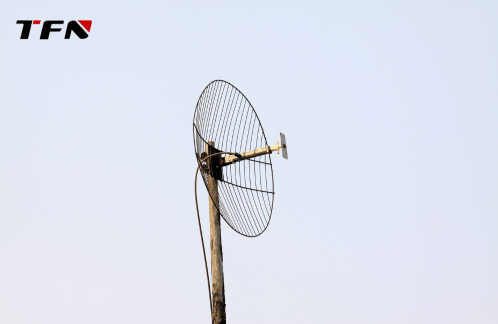How to use signal detection equipment to detect illegal signals and protect information security?
In the era of information explosion, information security has become an important cornerstone of social development. The transmission of illegal signals, such as unauthorized radio communications, malicious eavesdropping or interference, seriously threatens personal privacy, corporate secrets and even national security. Therefore, mastering how to use signal detection equipment to detect illegal signals has become a key link in protecting information security. This article will introduce how to use signal detection equipment to detect illegal signals.

1. Preparation
Equipment selection and inspection: First, select the appropriate signal detection equipment according to actual needs. The equipment should have good sensitivity, accurate positioning ability and stable performance. Before use, carefully check whether the equipment is intact, whether the battery is sufficient, and whether all accessories (such as antennas, headphones, etc.) are complete and correctly connected.
Environmental assessment: Understand and evaluate the environmental characteristics of the target area, including possible sources of radio interference, building obstructions, and signal propagation characteristics. This helps to optimize the configuration and use strategy of the equipment.
2. Equipment configuration and startup
Equipment configuration: Adjust the detection frequency and sensitivity of the equipment according to the type and frequency range of the target illegal signal. Some devices support custom settings, which can be fine-tuned according to actual conditions.
Start the device: Start the device correctly according to the requirements of the device manual. Usually, this includes turning on the power switch, selecting the appropriate working mode, and connecting necessary accessories (such as headphones).
3. Signal detection process
Preliminary scan: Perform a preliminary signal scan in the target area to obtain the overall distribution of radio signals in the area. At this time, you can pay attention to the signal strength indication on the device screen or the sound changes in the headphones to preliminarily determine whether there are abnormal signals.
Directional detection: If a suspicious signal is found during the initial scan, the directional antenna or rotating device of the device is used to accurately locate it. By adjusting the direction and angle of the antenna, observing the changes in signal strength on the device screen or the changes in sound in the headphones, the specific location of the signal source can be determined.
Signal identification and analysis: For the identified illegal signals, further analysis is performed using the device's built-in analysis software or external tools. Identify the source, type, purpose, and possible threats of the signal. If necessary, key parameters such as the frequency, bandwidth, and modulation method of the signal can be recorded for subsequent processing.
4. Countermeasures and follow-up treatment
Immediate reporting: Once an illegal signal is found, it should be reported to the relevant department or person in charge immediately. The report should include the location, type, possible threats and preliminary measures taken of the signal.
Interference and blocking: With authorization, special interference equipment can be used to interfere with or block illegal signals. However, it should be noted that interference behavior must strictly comply with laws, regulations and rules and regulations, and must not cause unnecessary interference or damage to legal signals.
Tracking and evidence collection: For important or complex illegal signal cases, professional teams can be organized to track and collect evidence. Use technical means to locate the specific location of the signal source, obtain relevant evidence and handle it according to law.
5. Precautions
Legal and compliant: When using signal detection equipment, it is necessary to strictly abide by national laws, regulations and rules and regulations to ensure the legality and compliance of detection activities.
Confidentiality principle: Sensitive information and data obtained during the detection process should be strictly confidential and must not be disclosed to unauthorized personnel or institutions.
Equipment maintenance: Regularly maintain and maintain signal detection equipment to ensure that it is in good working condition. Damaged or aging equipment should be replaced or repaired in a timely manner.
Skill training: Strengthen the skill training of relevant personnel on signal detection equipment to improve their operation level and response ability.
In short, signal detection equipment plays an important role in protecting information security. By using signal detection equipment to detect illegal signals reasonably, we can timely discover and eliminate potential information security risks, and provide strong protection for personal privacy, corporate secrets and even national security.
If you are interested in TFN signal detector, please contact the TFN sales team:
Email: info@tfngj.com
WhatsApp: +86-18765219251
Facebook: https://www.facebook.com/tfnfate/
